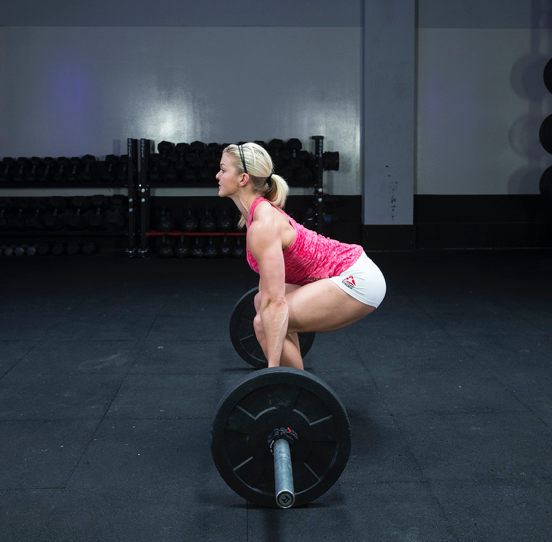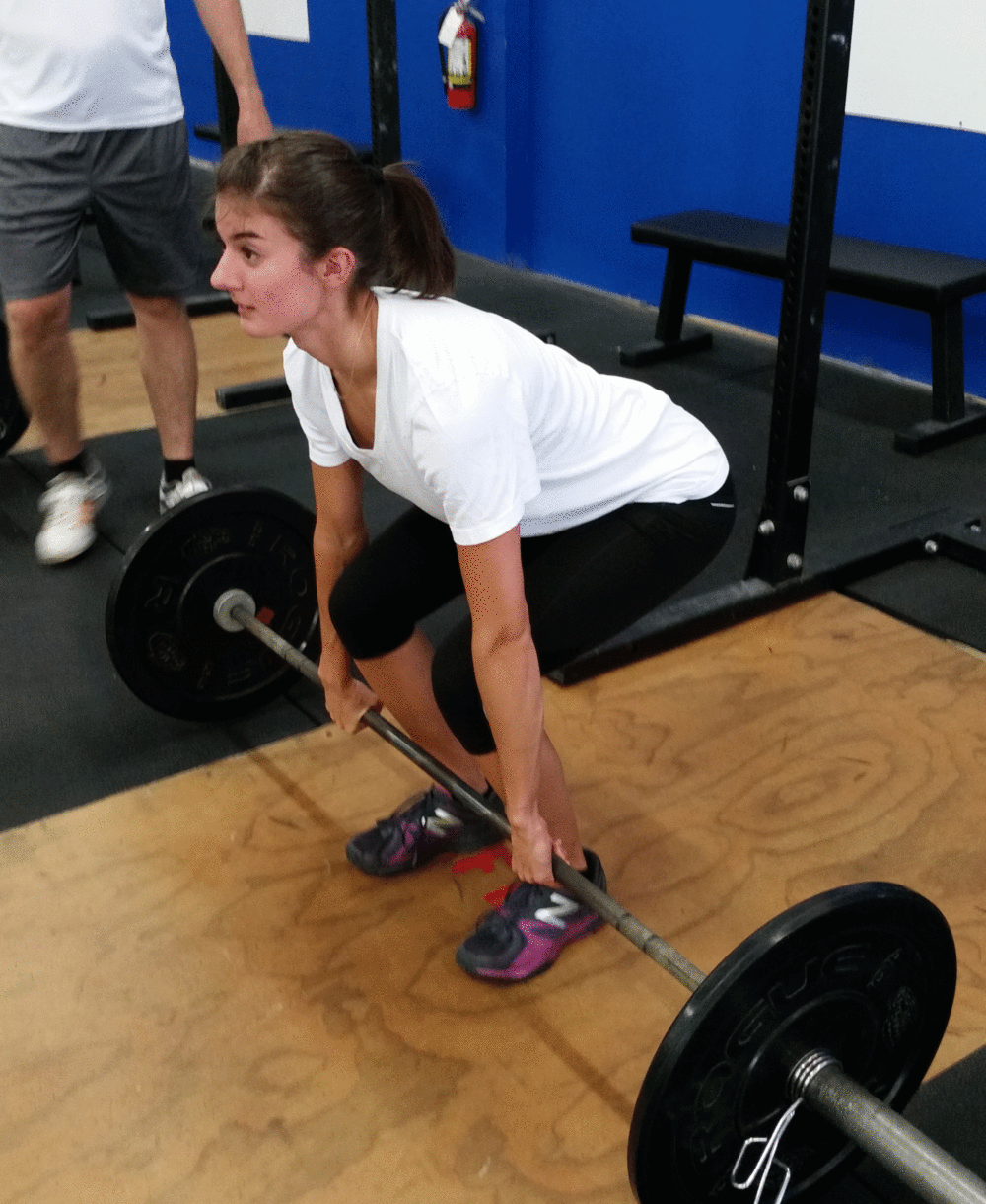Power Cleans: The Set Up
Power cleaning requires a tremendous amount of skill to perform correctly and safely. Most emphasis for this lift is on the athlete’s need for explosive strength and controlled precision of large muscle groups. While these are important abilities to have, this post will focus on the athlete’s flexibility (a commonly overlooked requirement), as it pertains to the technique of the setup. I always tell my clients that the most important, and most challenging, part of any exercise is the set up. Where one starts, sets the tone for the rest of the movement; and with advanced lifts like the power clean, the setup is one thing the athlete does not want to get wrong.
According to the NSCA text book, the starting position for a power clean is as follows:
- Stand with feet between hip- and shoulder-width apart with the toes pointed slightly outward
- Squat down with the hips lower than the shoulders and grasp the bar evenly with a pronated (palms toward lifter) grip
- Place the hands on the bar a slightly wider than shoulder-width apart, outside of the knees, with the elbows fully extended and pointing out to the side
- Place feet flat on the floor and position the bar approximately 1 inch from the front of the shins and over the balls of the feet
- Position body with
- Back neutral or slightly arched
- Scapulae depressed and retracted (low and close together)
- Chest help up and out
- Head in line with the vertebral column or angled slightly upward
- Shoulders over the bar
- Eyes focused ahead or slightly upward
In less words, setup should look something like this:
Let’s talk about the flexibility going on here: because the power clean is a gross motor movement, dynamic flexibility is our focus. Dynamic flexibility is the available range of motion (ROM) during active movement, meaning that the athlete must be able to get into and out of this position with relative ease. Not all athletes have trained for this type of elasticity, but there are ways to coach and correct dynamic flexibility issues.
Three of the most common flexibility-issues found in power clean setup are:
- Hips even to or higher than shoulders. In this situation, the athlete typically is lacking quadriceps and gluteal flexibility. The athlete must be able to stretch these muscles enough to get their hips to the right height, AND strong enough to maintain that position statically. Both static and dynamic stretching can help with this issue. Static stretching of the hip flexors, quads, glutes, and calves will ensure that the proper lower extremity muscle groups are capable of reaching the desired length. Dynamic warm ups, such as hip mobility and leg swings help move the lower limb through an entire ROM while encouraging core control.
- Flat back, but bent arms. Athletes with this issue are capable of depressing and retracting their shoulder blades, but not without having a slight bend at the elbow. This is an indicator of tight latissimus dorsi and/or biceps, which will also be detrimental for the catch. A great lat stretch to work on this is to have the athlete front rack the bar with wrist straps on and elbows facing forward. Another player or coach should then lift the elbows to a point of slight discomfort and hold for 30-60 seconds. Regular bicep stretching is also a good idea.
- Rounded back. I’m fairly certain that almost every strength coach has witnessed a rounded back for a multitude of exercises. In the case of the power clean set up, this is usually caused by tight chest muscles or sitting too low into the squat. If the athlete’s rear is two inches from the ground, but they also look like their hugging their legs, they’ve gone too far. Sitting too low at the setup can ruin the length-tension relationship of the muscles and cause a less than optimal force to be produced (i.e. the lift will probably fail or be really awkward). Posterior lower extremity static stretching, as well as some of the dynamic stretching in #1 should help on this front. As far as the tight chest, overhead dowel stretches and dislocates are great techniques to loosen up the pectorals and encourage a greater ROM for shoulder retraction and depression.
In any lift, the setup is the most important part in setting the tone. It is crucial to not only be able to maintain the power clean starting position, but also to move efficiently and powerfully from that position. Dynamic flexibility is definitely a factor in technique, and it is important as coaches that we train our athletes with diverse techniques to see improvement.
Source:
Haff, Greg, and N. Triplett Travis. “Flexibility.” Essentials of Strength Training and Conditioning. 4th ed. N.p.: National Strength and Conditioning Association, 2016. 320-22. Print.
Haff, Greg, and N. Triplett Travis. “Power Clean.” Essentials of Strength Training and Conditioning. 4th ed. N.p.: National Strength and Conditioning Association, 2016. 404-05. Print.
What do you think about the Weightlifting Blogging Series? Could you add a comment or question for Coach Blaser below? Our team of bloggers would like to know your feedback. When you submit a comment our goal is to post it within 24 hours. Thanks for your feedback!
“The views, opinions, and judgments expressed in this message are solely those of the authors and peer reviewers. This content has been reviewed by a team of contributors but not approved by any other outside entity including the Roman Catholic Diocese of Raleigh.”



